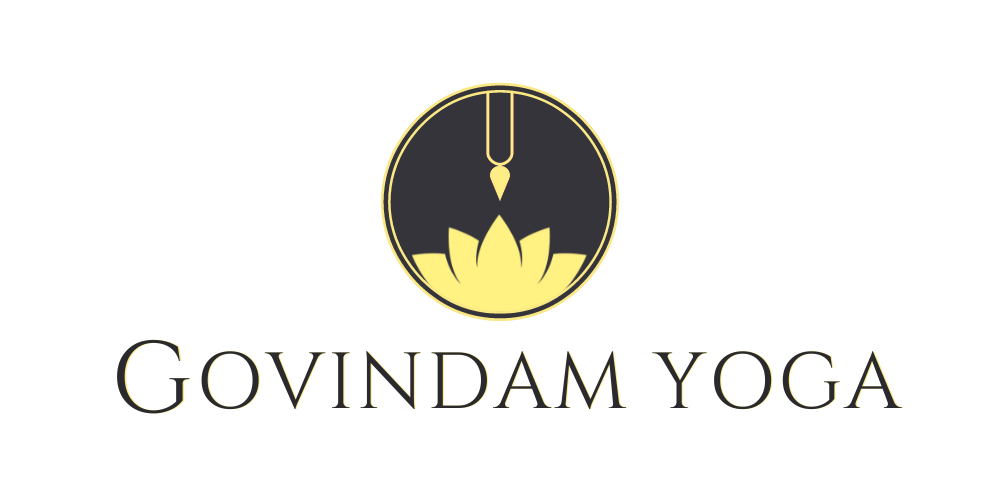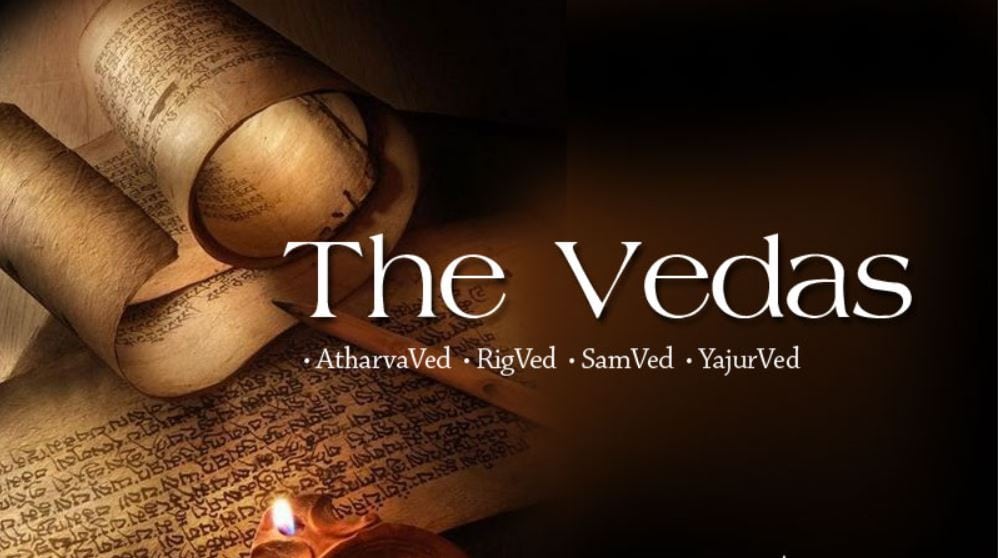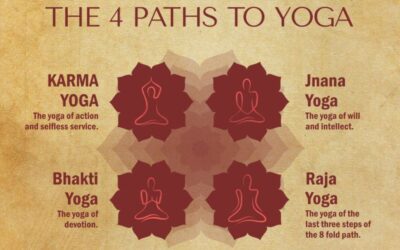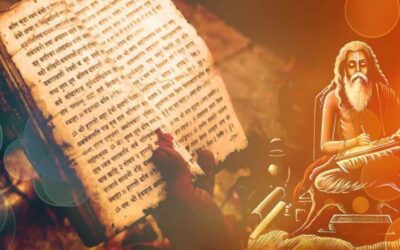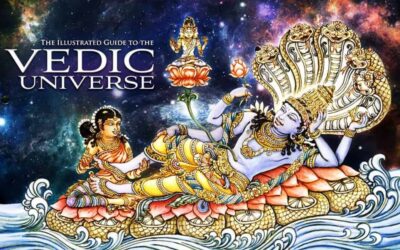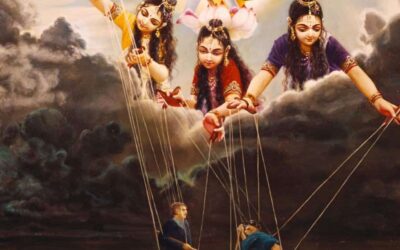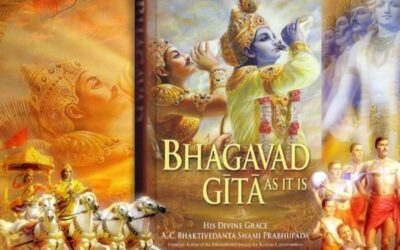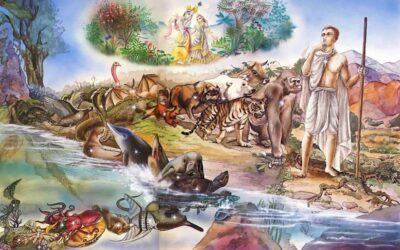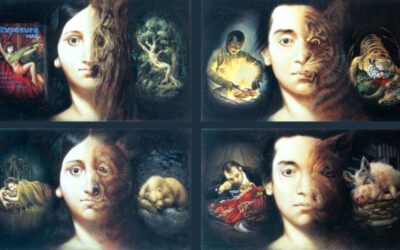Vedas – The Eternal Knowledge:
The Vedas refer to the absolute knowledge of God and his creation, which he manifests into the heart of the first-born person (Brahma) at the time of creation. For this reason, the Vedas are considered the ultimate authority and source for validating any principle. These Vedas are not the name of any book. Some historians say or even declare that the Vedas are the oldest book or scriptures in the world, this is an inaccurate statement. If we say that Vedas are 10000 thousand years old, that means that the people living before that had no means of knowledge, which is illogical. Thus, we cannot limit the Vedas under the time frame. Just as God existed before creation, his knowledge also existed before creation. Just as God is eternal his knowledge is also eternal. When he creates the world, he also gives this eternal knowledge in the form of a guidebook so this guidebook of knowledge is the Vedas.
Overview of Vedas:
- At the beginning when lord Vishnu created the universe (155.52 trillion years ago), manifested the complete knowledge in the first born Brahmaa and, this complete set of knowledge (instructions), about every aspects of creation is known as Veda.
- The Vedas are “anadi” (has no beginning, ever existing), and “apaurusheya (not subjected to any human intervention or authorless). The Vedas are ever existing with God.
- From Brahmaa, the knowledge of Veda was coming down through oral tradition (Shruti). Around 5,000 Years ago, seeing the reducing memory power and intellect of the future generations the great sage Vyasadeva, therefore wrote down the four Vedas along with fifth Veda (Smriti -18 Purana and 2 Itihas), from the original unwritten Veda.
- He finally summarized all the Vedic literature in a work entitled Vedanta-sutra. However, he was not satisfied by his work and still felt that something was missing. He discussed his dissatisfaction with his spiritual teacher, Narad- muni. Narad-muni concluded that Vyasadeva should compile the best of all Vedic knowledge, the unique part of the sublime knowledge that Lord Krishna had imparted to Brahma at the time of the creation. Thus, with great satisfaction Vyasadeva compiled the renowned Shrimad- Bhagavatam (the essence of all the Vedas).
- The reference to a fifth Veda is found in the Chandogya Upanishad (7.1.2),[2] which applies the term to the “histories” (Itihasa-Purana, “ancient History”) and is considered the essence of all Vedic knowledge. “itihāsapurāṇaṃ pañcamaṃ vedānāṃ”
Classification of Vedic Literature:
Four Veda: First Veda Vyasa wrote down four Vedas.
- Rigveda: It contains mantras and hymns glorifying various demigods and God.
- Yajurveda: It describes various mantras to perform different Yajna, sacrifice, and worship.
- Samaveda: Samaveda is the Veda of Chants, or “storehouse of knowledge of chants”.
- Atharvaveda: Apart from hymns and mantra to gods, it gives teachings to make life successful.
Each of the four Vedas consist four sections:
- Samhitas, is a collection of hymns and mantras for gods and sacrifice.
- Brahmanas, contains specific rules and regulations for different rituals.
- Aranyakas, explain the philosophy behind the ritual sacrifice of the Vedas.
- Upanishads, contains philosophy of Vedas and deals with spiritual science.
Four Upaveda: Vedas are further divided into part sub parts.
- Arthaveda: Subdivision of Rigveda and it deals with the architecture and economy science.
- Dhanurveda: Subdivision of Yajurveda and it deals with the military and warfare science.
- Gandharvaveda: Subdivision of Samaveda and it deals with the sacred music and dance science.
- Ayurveda: Subdivision of Atharvaveda and it deals with the medical science and health science.
Six Vedanga: These are limbs of Vedas which helps in understanding Vedas.
- Shiksha: Science of pronunciation, accent, stress, during a recitation of the mantras.
- Kalpa: Rules on the procedures for Vedic rituals mentioned in the Vedas.
- Vyakarana: The analysis of the grammar of the Vedas.
- Nirukta: explanation of words & meanings of the words in the context they are used.
- Chanda: Science of melody in which the mantras are enunciated.
- Jyotish: the study of auspicious times, & astronomy to perform rituals.
108 Upanishads: The Upanishads are called Vedanta (conclusion of Veda).
- Upanishads deal with meditation, philosophy, spirituality, and knowledge about the soul and the super soul (Brahma).
- The Upanishads are commonly referred to as Vedanta, meaning the end of Vedic knowledge.
- Along with the Bhagavad Gita and the Brahma sutra, the Upanishads are collectively known as the Prasthanatrayi (Main pillars of Vedic knowledge).
- Kathopanishad, Ishopanishad, Kenopanishad, Chandogyopanishad, Aitreyopanishad, Tattriyopanishad, Mandukyopanishad are few main widely known Upanishads.
Six Darshans: Santana Dharam has six systems of philosophy, which is called Shad Darshan.
- Sānkhya Darshan – System of analysis – by Kapil Muni – Study of the different elements of creation (prakriti, jiva, Purusha and Paramatma).
- Yoga Darshan – Eightfold Yoga – by Patanjali Rishi – Explanation of the eight limbs of yoga (Yama, Niyama, Asana, Pranayama, Pratyahara, Dharna, Dhyana, Samadhi), to liberate oneself from the material bondage.
- Nyāya Darshan – System of Logic – by Gautam Rishi – concerned with the means of acquiring right knowledge through logic.
- Vaiśeṣika Darshan – System of analysis – by Kanāda Rishi – Study about atoms and nature that liberation is to be attained through understanding the nature of existence.
- Mīmāṃsā Darshan – Science of Inquiry – by Jaimini Rishi – Explanation of the correct performance of Vedic rites (karma-kand) as the means to liberation. Also called poorva Mīmāṃsā.
- Vedānta Darshan – Conclusion of Vedas – by Vyasa Deva – Teaching of Vedānta is that there is one Absolute Reality, Brahma and achieving liberation through right knowledge. Vedanta is also referred as Uttar-Mīmāṃsā.
18 Puranas: The Puranas are the fifth Veda and have the essence of all Vedic literature.
- Puranas cover various topics such as Incarnation of God, cosmology, Creation of the cosmos and the humans, Genealogy of gods and sages, life after death and various other knowledge in the form of story from ancient history.
- Puranas are divided into three parts. Six Sattvik Purana (Mode of Goodness), Six Rajasik Purana (Mode of Passion), and Six Tamasik Purana (Mode of Ignorance).
- The best among the Puranas are the Bhagavata Purana, Vishnu Purana, Narad Purana and Padma Purana. The most popular is the Shrimad Bhagavatam (Bhagavata Purana), and is the best among of all the Vedic literature.
Two Itihasas: The Itihasas also come under the fifth Veda and have the essence of all Vedic literature.
- Itihasa, (literally means history), includes the Mahabharata (Related to Lord Krishna) and the Ramayana (Related to Lord Rama).
- The Mahabharata was written down by Vyasa deva (5000 years ago), whereas the Ramayana was written down by Maharshi Valmiki (more than a million year ago).
- The Mahabharata contains “Bhagavad Gita” (Song of God), and The Ramayana contains “Yoga Vasishtha (Science of Yoga and Spirituality).
Conclusion:
Now how to access this ocean of knowledge which requires hundreds of years just to read. There is one scripture that holds the key and essence of all the Vedic scriptures – The “Bhagavad Gita” (Song of God). Shri Krishna created a scenario and gave this absolute knowledge to all of us through Arjun. Vyasa Deva saw this entire dialogue taking place, when he wrote the Mahabharat, he included this in Mahabharat. Therefore, in one sense, it is a part of the Itihasa (Fifth Veda) and in the other sense, it is spoken by the Lord himself so it is highly respected like Vedas and it is often called Gitopanishad.
Shri Krishna quotes to Arjuna in Bhagavad Gita that “Arjuna I am like the milkman; these Upanishads are like a cow. I have milked this knowledge from all these Upanishads and giving it to you in the form of Bhagavad Gita. Therefore, it is the summary of all the scriptures. This is the reason it is so highly respected and it has been translated into every language of the world.
